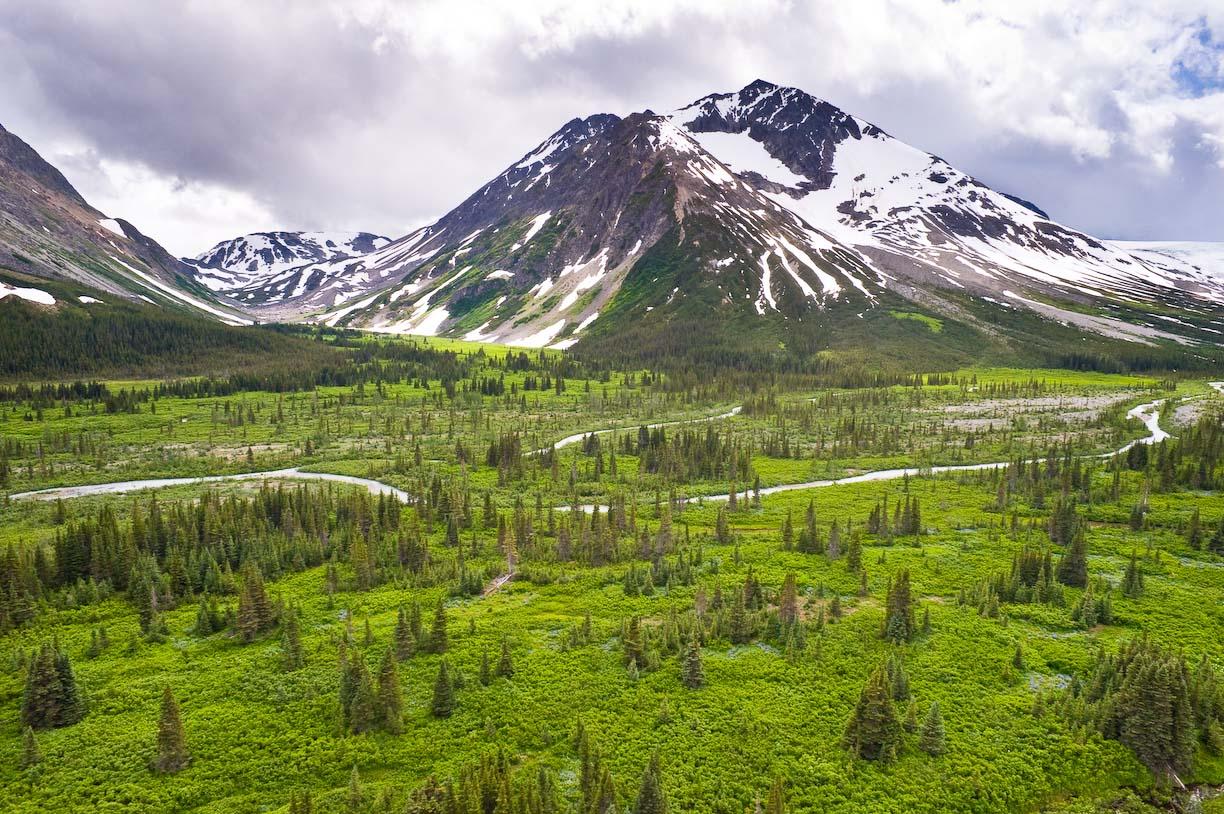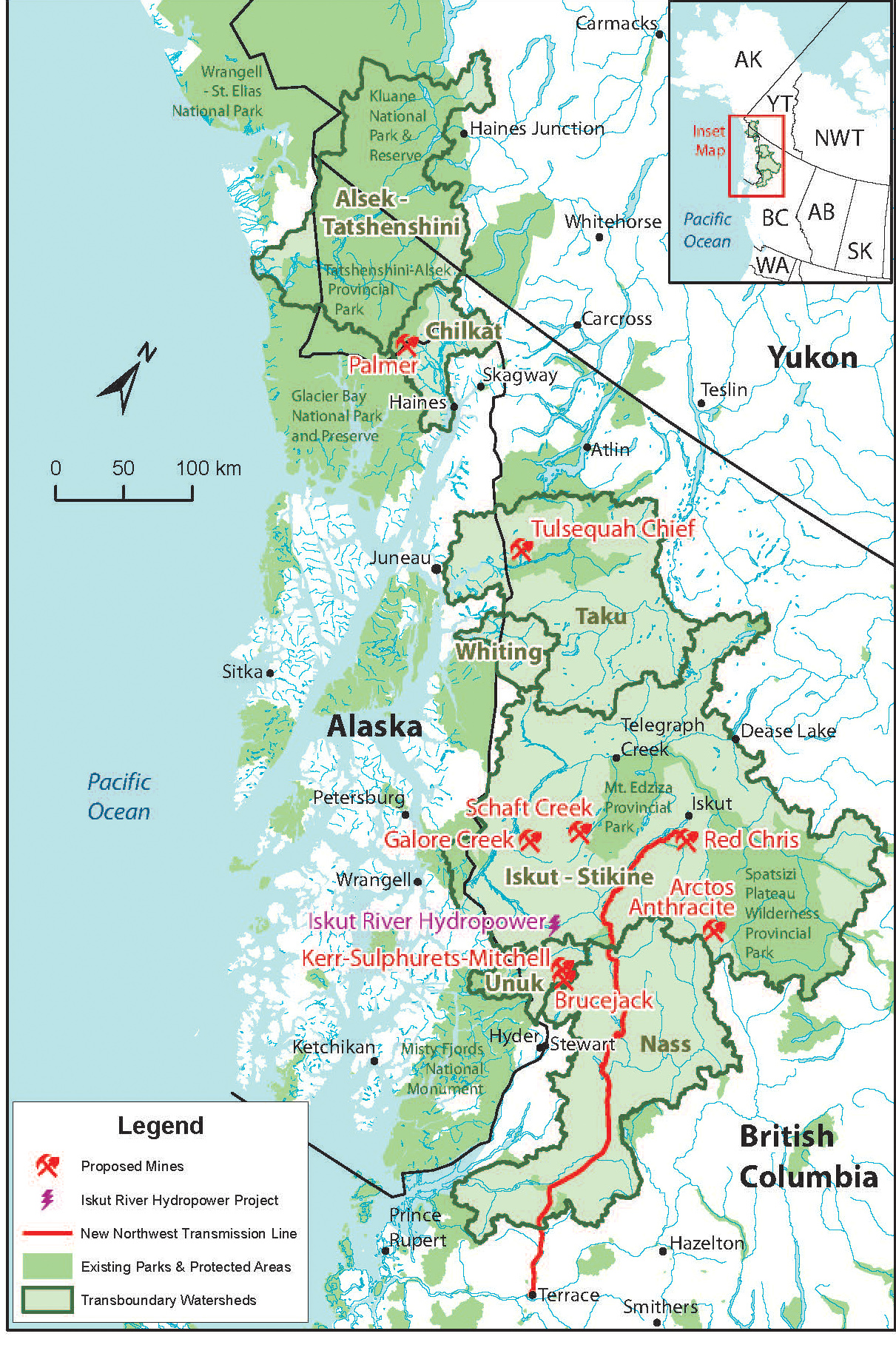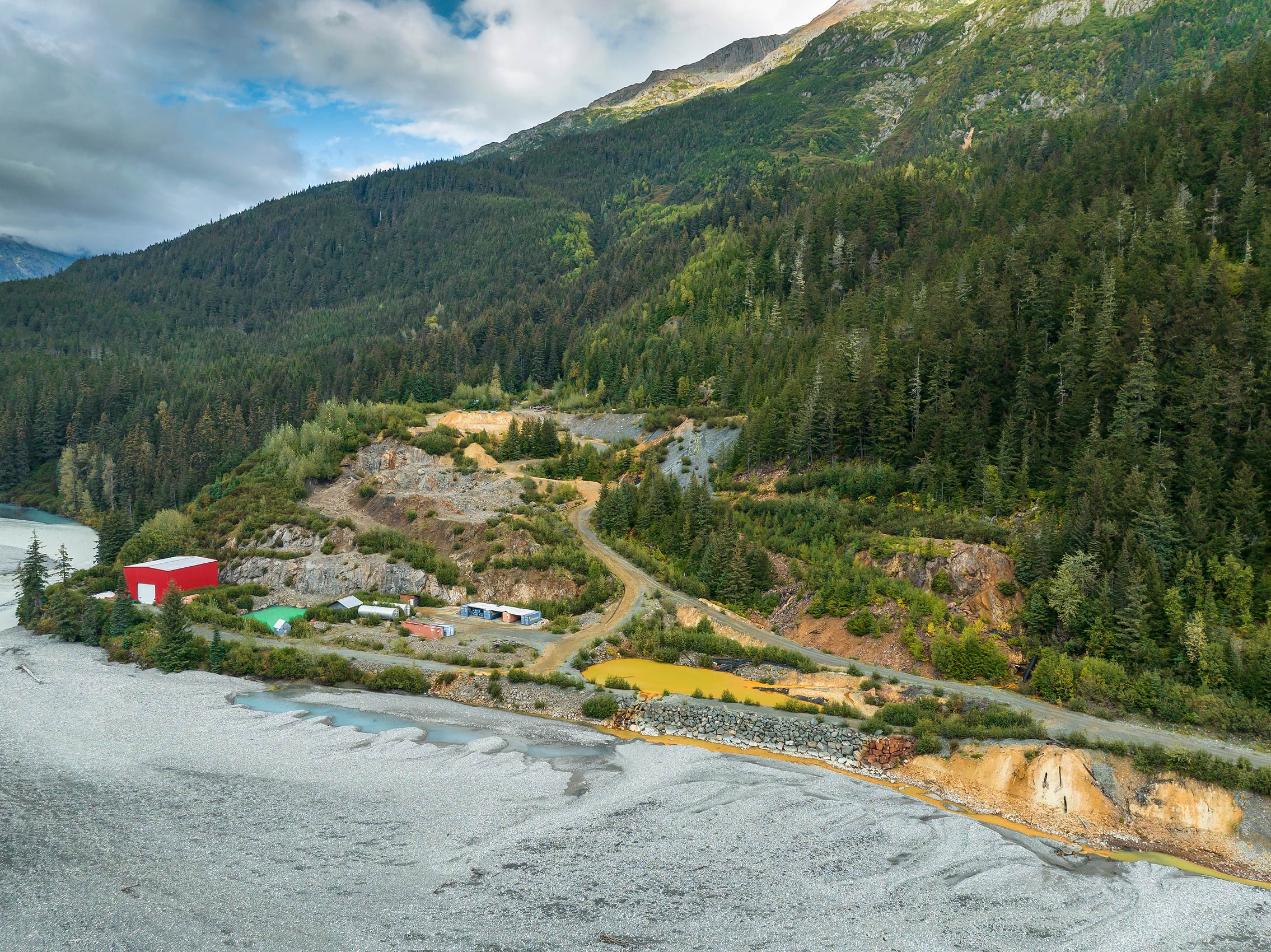Tulsequah Chief Mine: polluted waters — broken promises

The Tulsequah Chief Mine is a silver, gold, zinc and copper mine that was in operation from 1951-1957 and then abandoned without any reclamation. For over six decades it has been polluting the transboundary Taku watershed with toxic acid mine drainage. We must demand the BC government clean it up. It’s time to end this infamous mine’s degradation of a world class international salmon river system.

Where is it?
The Tulsequah Chief site is in a remote, mountainous environment in northwest BC, about 100 km south of the town of Atlin and about 65 km northeast of Juneau, Alaska on the bank of the Tulsequah River — the largest tributary to the transboundary Taku River.
With its headwaters deep within the boreal landscapes in BC. The Taku River flows through southeast Alaska’s rainforests into the Pacific Ocean. The Taku covers 1.8 million hectares (18,000 square km) and is the largest watershed on the Pacific coast of North America that is inaccessible by road. It contains some of the continent’s richest and most extensive fish and wildlife habitat. In a world facing increasing deforestation and destruction from industrial development, an intact region of this size and stature is extremely rare.
The Taku is usually the largest wild salmon producer in this transboundary region. Annual salmon runs can top 2 million wild fish, including chinook, coho, sockeye, chum and pink salmon. There are also significant populations of steelhead trout, cutthroat trout, Dolly Varden char and eulachon. Wildlife species including grizzly and black bears, moose, Stone’s and Dall sheep, mountain goats, wolverine, lynx, eagles and migratory birds rely on this region.
The Taku watershed is the traditional territory of Indigenous Tlingit people, represented by the Taku River Tlingit First Nation in Atlin and the Douglas Indian Association in Juneau.
Why does it matter?
The largest intact roadless watershed on the Pacific coast of North America makes this region one of a kind. The Taku River and surrounding land is a sanctuary for many species that call this oasis home. The Taku’s cold, clean water provides a refuge as climate change impacts other watersheds. The region is profoundly important to the Tlingit people. Salmon is a keystone species — the area’s ecosystem and human communities depend on it.
The acid mine drainage, laced with toxic metals such as lead and copper, can inhibit the homing ability and sense of smell of adult salmon and prevent them from spawning. The drainage is most toxic to developing eggs and juvenile salmon. Salmon runs all along the west coast of BC and Alaska are declining due to ocean conditions and climate change. Since we can’t stop these changes, at least in the short-term, we must do whatever we can to protect freshwater habitat.
BC has often boasted its mining regulations are among the best worldwide and it ensures mining is done properly. However, the ongoing pollution from Tulsequah Chief does not inspire much trust. Creating this trust starts with cleaning up the mine.
What’s happening now?
Two companies have gone bankrupt trying to re-open this mine and neither did anything meaningful to address the acid drainage problem. The BC government did little to hold them accountable so now cleanup is its responsibility. In 2015, the government promised to end Tulsequah Chief’s degradation of the Taku. Yet, eight years later its pollution continues unabated.

The government has developed a draft reclamation plan and conducted three seasons of preparatory site work. However, its unclear when the plan will be finalized, how cleanup will be paid for and when real cleanup will start. BC needs to match its words with real actions and end the threat this pollution poses.
The Taku River Tlingit First Nation, Douglas Indian Association and 15-tribal member Southeast Indigenous Transboundary Commission in Alaska have called on BC to honour its commitment to end decades of toxic acid mine discharge. The state of Alaska has long pushed for its closure and cleanup. There's tremendous support for the mine’s remediation. So why is the province dragging its heels on mine cleanup? For a thriving Taku, the BC government must keep its promise to clean
up the mine. Let’s make sure it does.
What can you do?
Over six decades of mine pollution into the transboundary Taku watershed is enough! For the health of this rich river system and all species that rely on it, we must rally together and demand the BC government clean this mess up with no more delays. Let’s take action together and keep the Taku abundant and beautiful. Tell BC to clean up the Tulsequah Chief Mine.
Share this publication with family and friends.
Write Josie Osborne, BC Minister of Energy, Mines and Low Carbon Innovation, and demand the clean up of the Tulsequah Chief Mine.
Find out more about the Tulsequah Chief Mine at: RiversWithoutBorders.org/